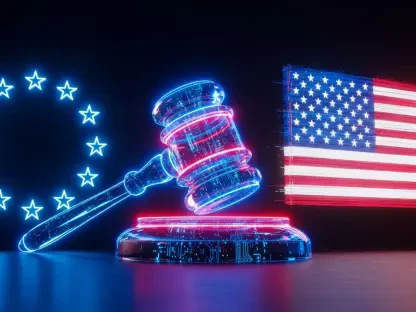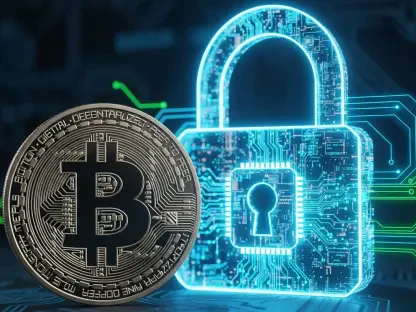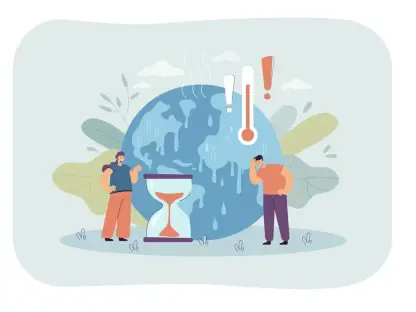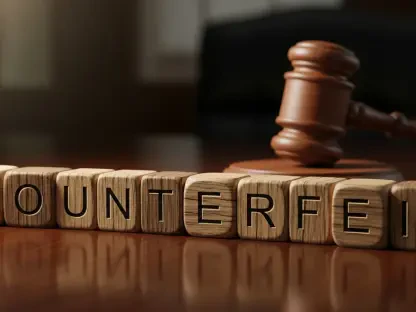Desiree Sainthrope is a seasoned legal expert known for her extensive contributions in drafting and analyzing trade agreements. With a robust background in global compliance and intellectual property law, she offers a unique perspective on the ongoing discourse surrounding IP laws and the evolving landscape of technology.
Can you explain the reasoning behind your call for the abolition of all intellectual property (IP) laws?
The call for abolishing IP laws stems from the belief that the current system is fundamentally flawed. It often creates barriers rather than fostering innovation and creativity. IP laws can lead to monopolistic practices where larger corporations hold undue power over smaller creators and innovators. By removing these laws, we can create a more open and collaborative environment where ideas can be shared and improved upon freely.
In what ways do you believe the current IP system restricts creativity and innovation?
The current IP system frequently restricts creativity and innovation by enabling companies to enforce exclusive rights over ideas, technologies, and even basic concepts. This practice can stifle the flow of new ideas and technologies, as smaller entities or individuals may lack the resources to navigate the legal landscape or defend themselves against infringement claims. Consequently, the potential for groundbreaking advancements is often limited by the fear of litigation or the barriers to accessing existing knowledge.
You mentioned that there are “much greater models to pay creators.” What are some of these alternative models?
Alternative models to traditional IP laws include fair revenue-sharing schemes, where creators are compensated based on the usage and popularity of their works. Crowdfunding platforms and patronage systems, where supporters can directly fund creators, are also gaining traction. Additionally, subscription-based models and open-source collaborations can provide sustainable revenue streams while fostering innovation and community engagement.
How do you address concerns that abolishing IP laws might harm individual creators who rely on these protections?
It’s important to recognize that the goal isn’t to leave creators unprotected but rather to develop alternative mechanisms that can provide fair compensation without the drawbacks of the current system. By implementing models like equitable revenue sharing and ensuring robust legal frameworks against exploitation, we can help protect individual creators while encouraging a more open and collaborative environment.
What do you think about the idea that automated IP fines for AI infringement could replace current laws?
Automated IP fines for AI infringement are an interesting proposition. They could potentially streamline the enforcement process and ensure that violations are addressed swiftly and fairly. However, there needs to be a careful consideration of how such systems are designed and implemented, ensuring they don’t inadvertently penalize legitimate use or create new forms of inequality.
How do you respond to criticism that your stance on IP laws could be viewed as an attack on creators’ rights?
The criticism is understandable, but it’s predicated on the assumption that IP laws are the only means of protecting creators’ rights. By exploring and implementing alternative models, we aim to strike a balance between protecting creators and promoting broader access to knowledge and innovation. The intention is not to undermine creators but to find more effective ways to support them.
Can you elaborate on your argument that the current IP system unfairly benefits gatekeepers?
The current IP system often allows large corporations and gatekeepers to amass extensive portfolios of patents and copyrights, which they can use to dominate markets and exert control over smaller entities. This can lead to a concentration of power and wealth, where gatekeepers extract disproportionate value from the creations of others while providing minimal benefit to the original creators. By rethinking IP laws, we can level the playing field and ensure that value is distributed more equitably.
How do you see the balance between protecting creators’ rights and fostering innovation in a world without IP laws?
Without traditional IP laws, the balance can be maintained through alternative frameworks that prioritize fair compensation and collaborative innovation. By promoting open access to knowledge and fostering a culture of shared progress, we can protect creators’ interests while simultaneously encouraging the development of new ideas and technologies. The focus should be on creating systems that reward innovation and creativity rather than restricting it.
Given the lawsuits against AI companies like OpenAI, what changes do you propose to address issues of copyright infringement by AI?
To address copyright infringement by AI, it’s critical to develop clear regulations that outline how data and content should be used for training purposes. This might involve establishing guidelines for fair use in the context of AI or creating licensing frameworks that allow for the responsible and ethical use of copyrighted material. Transparency and collaboration between AI developers and content creators can also play a significant role in mitigating these issues.
How do you reconcile your position on IP laws with Tesla’s 2023 lawsuit against Cap-XX for patent infringement?
Reconciling the stance on IP laws with specific cases like Tesla’s lawsuit involves recognizing the complexities and contradictions inherent in the current system. While the goal is to move towards a more open and equitable model, the realities of existing legal frameworks can necessitate actions that seem contradictory. This underscores the need for a broader systemic shift rather than piecemeal changes.
What feedback have you received from the tech community regarding your proposal to delete all IP laws?
The feedback from the tech community has been mixed. Some tech innovators and entrepreneurs are supportive, seeing the potential for greater collaboration and innovation. However, there are also concerns about the protection of individual rights and the feasibility of alternative models. It’s a complex issue, and the community is actively engaged in exploring viable solutions.
Do you believe that your plan to abolish IP laws is realistic in the current legal and business environment?
While the idea of abolishing IP laws may seem radical, there is growing recognition of the need for reform. The current legal and business environment is increasingly open to exploring new models that can better serve both creators and the broader industry. It’s a question of gradual evolution rather than an immediate overhaul, addressing the shortcomings of the existing system while fostering innovation and fair compensation.
How do you address the argument that stronger IP protections are necessary to incentivize innovation and investment in new technologies?
The argument for stronger IP protections is often based on the assumption that they are the primary means of incentivizing innovation and investment. However, history shows that many groundbreaking innovations occurred in collaborative and open environments. By implementing fair compensation models and encouraging collaborative approaches, we can continue to incentivize innovation without relying solely on traditional IP protections.
What role, if any, do you think government regulations should play in protecting creators while encouraging innovation?
Government regulations should focus on creating a balanced framework that both protects creators and encourages innovation. This might involve setting standards for fair compensation, preventing monopolistic practices, and promoting open access to knowledge. The goal should be to create an environment that fosters creativity and collaboration while ensuring creators receive due recognition and rewards for their contributions.
How can creators ensure they are fairly compensated if IP laws are abolished?
Ensuring fair compensation in the absence of traditional IP laws requires the adoption of alternative models such as revenue sharing, patronage, and subscription services. Additionally, platforms and technologies that facilitate direct support from consumers to creators can play a critical role. It’s about creating systems that recognize and reward contributions in ways that are sustainable and equitable.
What steps can be taken to transition from the current IP system to the alternative models you are proposing?
Transitioning from the current IP system involves a multi-faceted approach. This includes gradually introducing and refining alternative compensation models, educating stakeholders about the benefits of open collaboration, and developing legal frameworks that support these changes. It’s also important to pilot and test these alternatives in real-world scenarios to understand their impact and make necessary adjustments.
How do you envision the future of intellectual property and innovation without traditional IP laws in place?
In a future without traditional IP laws, I envision a landscape where innovation is driven by collaboration and open access to knowledge. Creators would be incentivized through models that ensure fair compensation and recognition. This environment would reduce barriers to entry, allowing a more diverse range of voices and ideas to contribute to progress and technological advancement.
Do you have any advice for our readers?
My advice to readers is to stay informed and engaged in the discussions around IP laws and innovation. Embrace a forward-thinking approach that considers both the protection of creators and the promotion of collaborative progress. By being open to new models and actively participating in these conversations, we can collectively shape a more equitable and innovative future.









